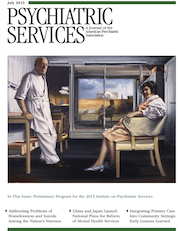Mental Health Service Use Among Chinese Adults With Mental Disabilities: A National Survey
Abstract
Objective
Mental disability in China has become a significant public health problem. However, few studies have examined utilization of mental health services in China among people with mental disabilities. This study explored patterns of service use and associated socioeconomic factors among Chinese adults with mental disabilities.
Methods
Data from a population-based survey representing approximately 75% of the Chinese population were analyzed. Mental disability was defined as having a mental disorder (cognitive, affective, or behavior disorder) lasting more than one year that limited daily life and social functioning. The study assessed use of any mental health specialty care and use of specific types: medical services only, rehabilitation services only, and medical and rehabilitation services. Standard weighting procedures were used. Population weighted numbers, weighted proportions, and the odd ratios (ORs) were calculated.
Results
A total of 1,909,199 noninstitutionalized adults (weighted N=984,698,518) age 18 and older were interviewed. The weighted prevalence rate of mental disability was .81%. More than 4.2 million adults with a mental disability (52%) had never used a mental health service. Several variables were associated with greater use of mental health services: urban residence (OR=1.65), high school education or higher (OR=1.66), being married (OR=1.12), medical insurance coverage (OR=1.39), and higher annual family income (OR=1.28).
Conclusions
The findings indicate unmet needs for mental health services among Chinese adults with mental disabilities, as well as socioeconomic inequalities in use. Strategies are needed for enhancing community mental health service systems and reducing barriers to mental health service use in China.



